Important TikTok Facts
In 2021, Tik Tok was the world’s fastest growing social media platform and the most downloaded app worldwide. Endless hours of content are being shared and consumed by approximately one billion users every day. It is a source for entertainment and information, as well as disinformation and conspiracy theories. Its impact on people’s lives cannot be denied. If used rightly however, it can be a treasure trove for journalists. It can provide us with new ideas, insights into recent trends, and grant us access to user generated content that can’t be found elsewhere. This guide will provide you with the most important skills to get to know the platform and use it for critical reporting.

How to Access TikTok Safely
You can access TikTok via a web browser of your choice or via the mobile app. Since it was created as a mobile app, browser-only research is not recommended. You can’t use all the features and you will miss out on important information that is not available in the browser.
When you access the app for research, use a fake account with a username unrelated to you. TikTok is regularly criticized for its issues with data-privacy and when you are looking into sensitive topics, you should be cautious. In the past users could also see who visited their profile. While this feature has since been deactivated, it might reappear in the future.
More importantly, TikTok is owned by the Chinese company ByteDance, which is led by members of the Communist Party. Due to Chinese security law, ByteDance is required to cooperate with Chinese intelligence agencies and must hand over user data to the authorities if requested. For that reason, avoid installing TikTok on a device that you use for sensitive communication. If you are using TikTok on your laptop, you can further protect your privacy by running it in a browser that hides your user information. In our chapter on safe reporting you can find a more comprehensive guide about online safety for journalists.
Getting to Know TikTok
If you are unfamiliar with the app, setting up an account for exploration is the best way to get you started. This learning-by-doing approach takes some time but it will help you understand the platform better, and will make things easier when you start using it for research.
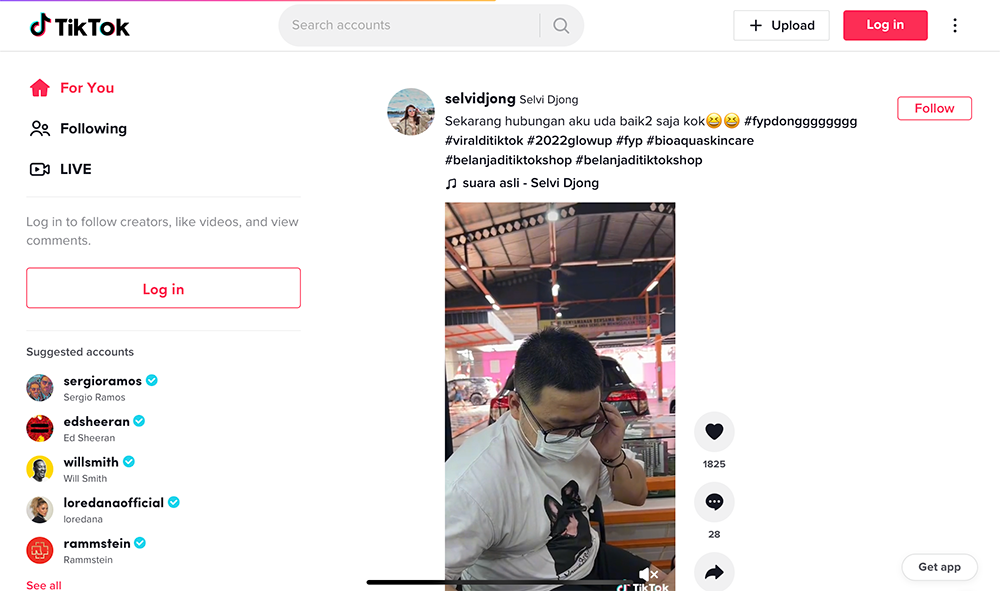
If you are using TikTok you should always be aware of the algorithm. Whether you are doing purposeful research, or whether you are just exploring the app: the algorithm will influence what you see. It will learn quickly on which videos you linger, which TikToks you are watching several times, and which ones you are skipping. TikTok will use that information to predict which content is most likely to interest you and keep you engaged the longest. This can distort search results and you might end up in bubbles. To work against that and start a new search with a clean slate and a “neutral” algorithm, reinstall the app and log in with a completely new profile.
How to Use TikTok for Journalistic Research
Your approach to research with TikTok should depend on what you want to know. We will start with techniques to better explore the app in general and search for topic-related content, before explaining how to investigate specific user profiles.
Going Down the Hashtag-Rabbit-Holes
Hashtags are an important part of topic-exploration and story hunting on TikTok. Creators put them in the description of their videos to help the algorithm identify what their content is about. Hashtags often follow a certain slang and use intentional misspelling to either avoid censorship or to serve as a “coded-language” for people interested in certain topics. “c0vid” for example might be used instead of “Covid-19” or “Covid”.
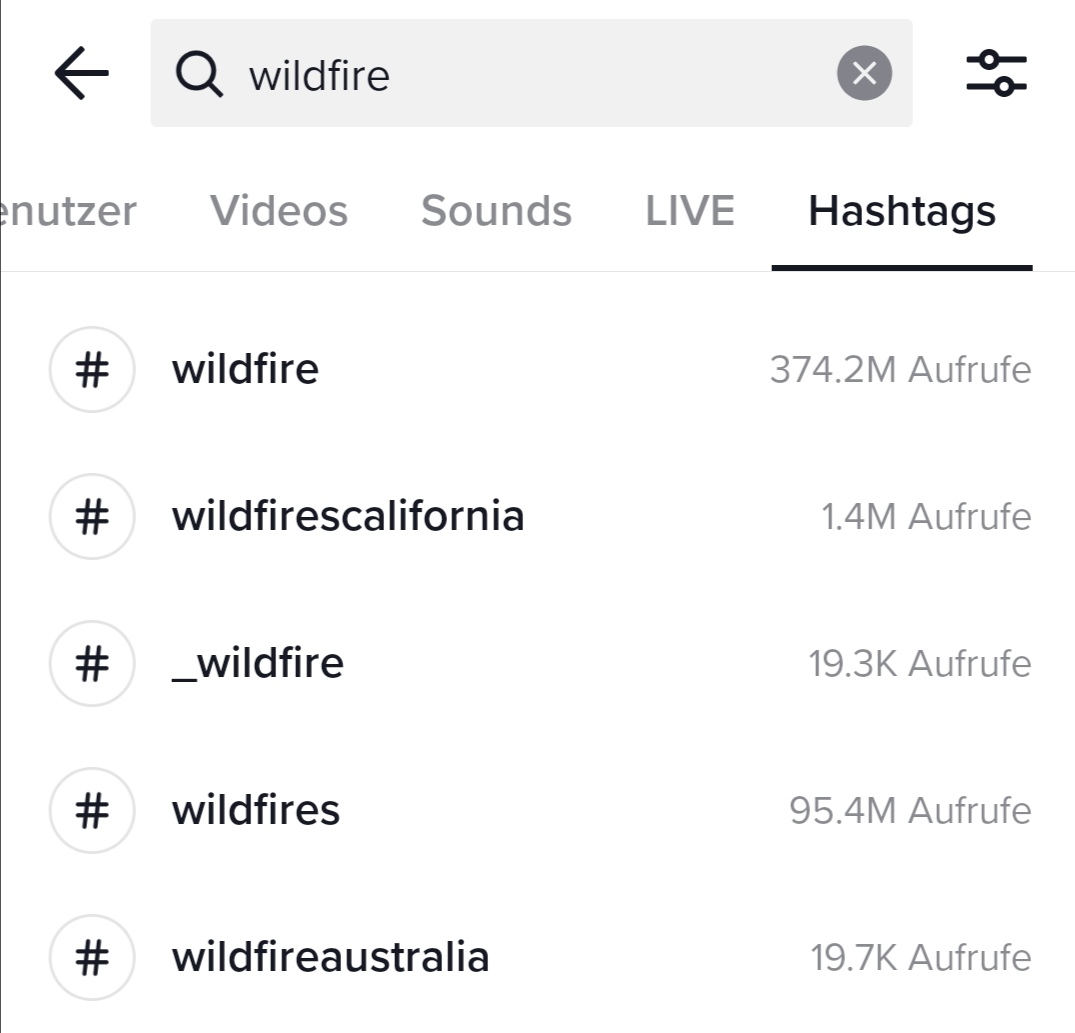
To find these coded hashtags you can type in keywords into the Hashtag-Tab of the search function. TikTok will suggest hashtags to you that are similar to your keyword. Even more helpful are the hashtags under videos that deal with your topic of interest. Pay close attention to unusual spelling or possible code words and find out if they lead you to more interesting content.
Research TikTok Hashtags on Google
You can use Google to look for videos with a certain hashtag or to look for hashtag variances that you don’t know yet.
To find videos that use a certain hashtag you can just type the following URL into your browser:
tiktok.com/tag/hashtag_of_interestThe result could look like this:
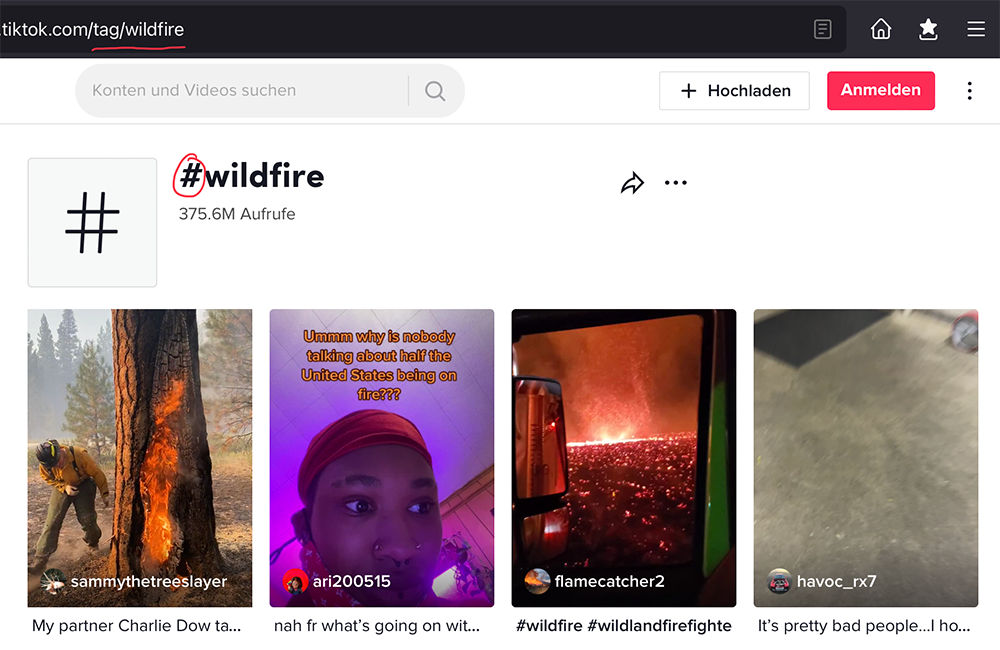
If you are looking into a topic and want to explore the variety of hashtags people are using for it, you can type the following line into Google’s search field.
tiktok.com/tag Buzzword of Interest Google will then produce results with hashtags that are either similar or related to the buzzword that you typed into the search field.
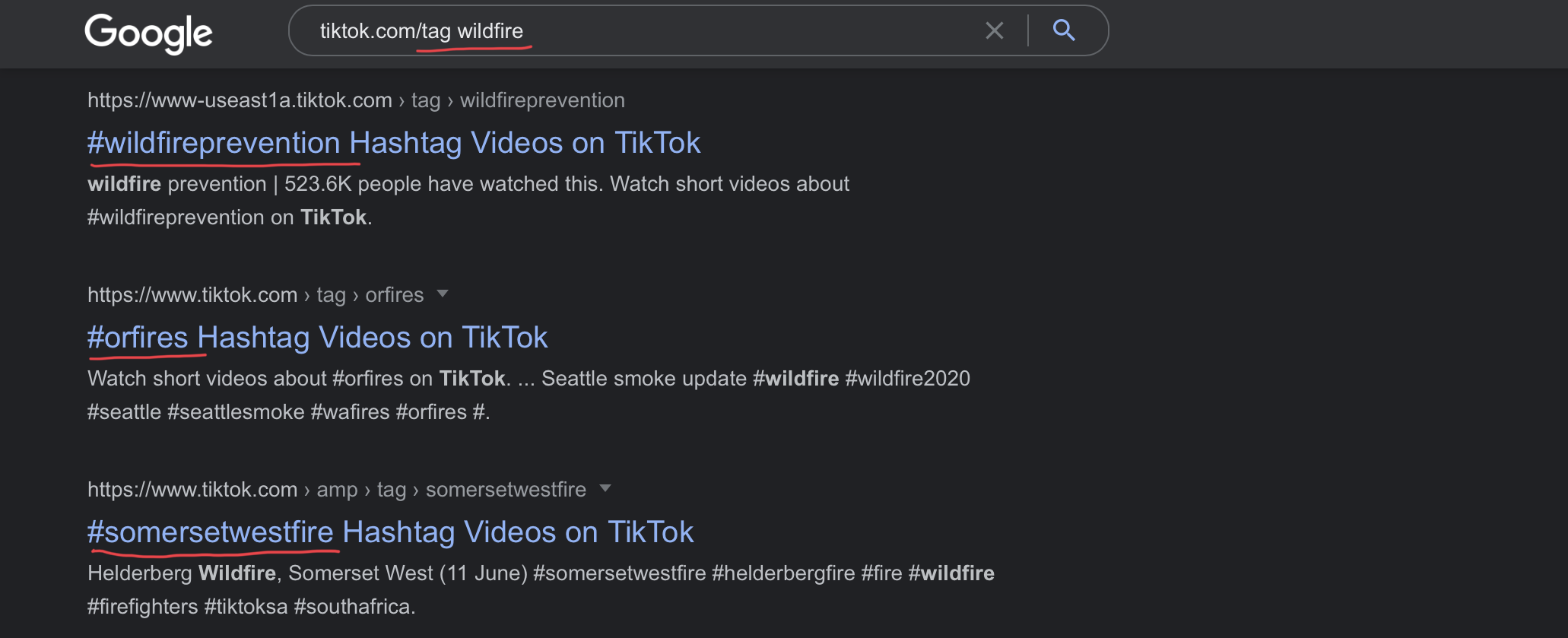
If the search for hashtags doesn’t provide useful results, Google’s “intext” operator is another option to search for videos that use certain keywords or phrases in the description text of Tik Tok’s and not only in hashtags.

Results can look like this:

If you want to look for some of that information without directly accessing TikTok or without using the google operators, TikTok Quick Search is a helpful browser-based tool that you can use to explore the platform without feeding it any information.
Watch Out for Misinformation
Be aware that not everything on TikTok is true. There is a lot of misinformation circling on the platform and you should always try to verify it as best as you can. Head over to our chapter on Video-Verification to learn more about verification.
Upload Verification
An important and relatively simple way to check one aspect of a TikTok’s candidacy is its upload time. If a video that supposedly shows a certain incident was uploaded before that incident even took place, then it is clearly false. TikTok only provides the date of an upload but this tool by Bellingcat returns the exact time of the upload when you give it the URL of a video.
How to Investigate TikTok Profiles
Knowing who is behind a TikTok profile can be important for many reasons. You might want to verify the content a user has posted or want to learn more about a user’s general activity on the internet and their connection to other users. This can become particularly relevant when you are reporting on fake-news, hate campaigns, conspiracy theories or scams.
Profile Information:
TikTok profiles provide you with different pieces of information that you can use to learn more about a certain user.
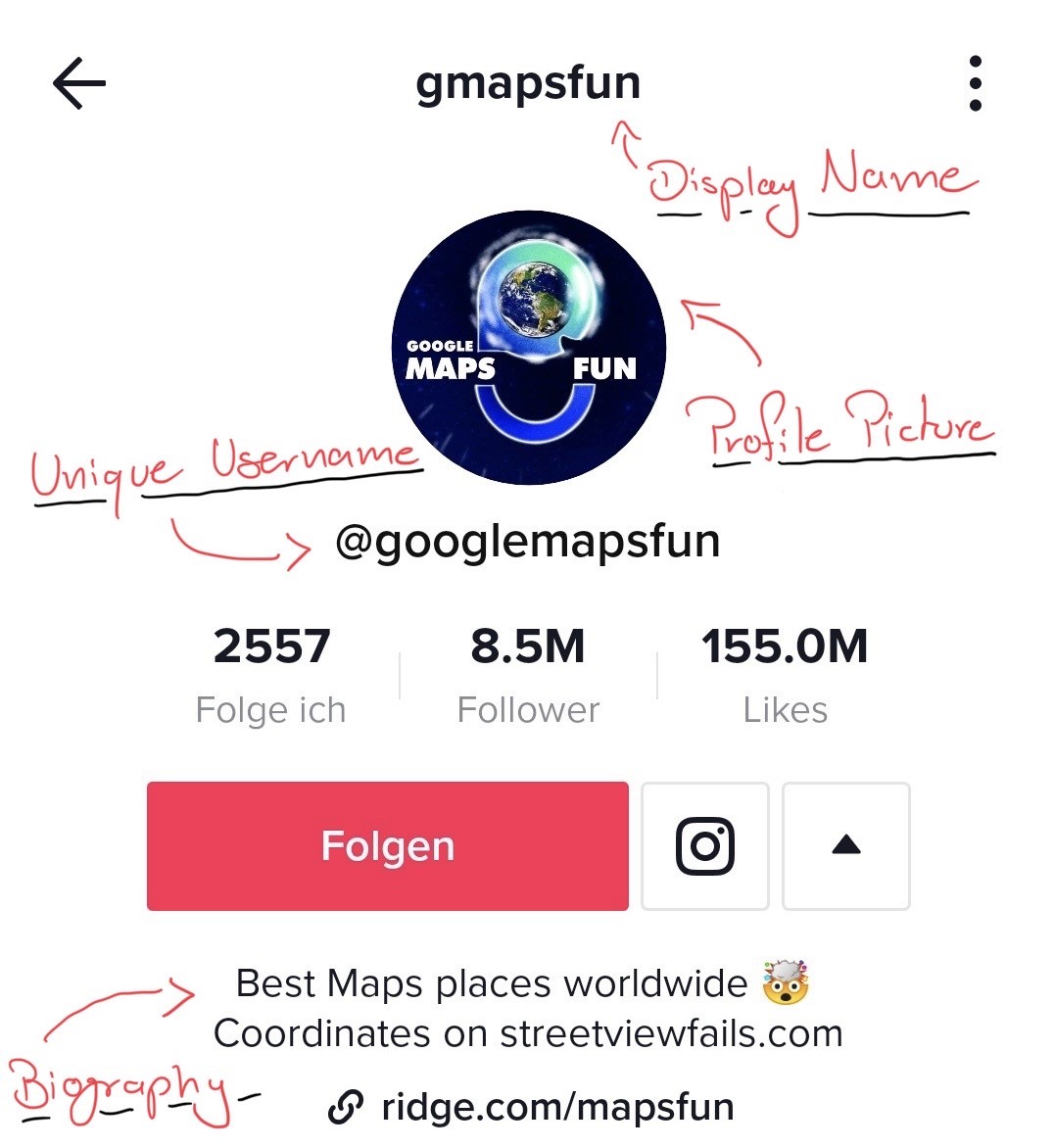
The distinction between these items is important because you can use each of them to search for different information:
- Display Name: not unique (several users might have the same), can contain spaces
- Unique Username: must be unique, does not contain spaces, always begins with an @ and appears in the URL of a TikTok profile like this: tiktok.com/@uniqueusername
- Profile Picture: image uploaded by the user. If no image is provided, Tik Tok just puts in the first letter of the user name. TikTok deletes the picture’s metadata
- Biography
- Followings, Followers and Likes
Finding TikTokers’ on Other Platforms
If you want to know whether a TikToker is active on other platforms, or if there are accounts that look very similar, you have several options:
You can look for the unique username as well as for the display name by running it through different search engines using quotations (e.g. “googlemapsfun”). There are also many different username-search websites who specifically look for profiles with the same username on other platforms. This can be useful, since people often use the same or very similar names on different platforms. You should always rely on more than one tool or more than one search engine, since they do not always produce the same results.
Users might also use the same biography text across several platforms. Just like the unique username, you can put the bio-text into quotation marks and run it through different search engines.
You can also use username-availability-check-services like emai-checker.net to find out if there is a mail-address with the username you are interested in. Be sure to run this check on different services and with different popular providers such as gmail, outlook or yahoo.
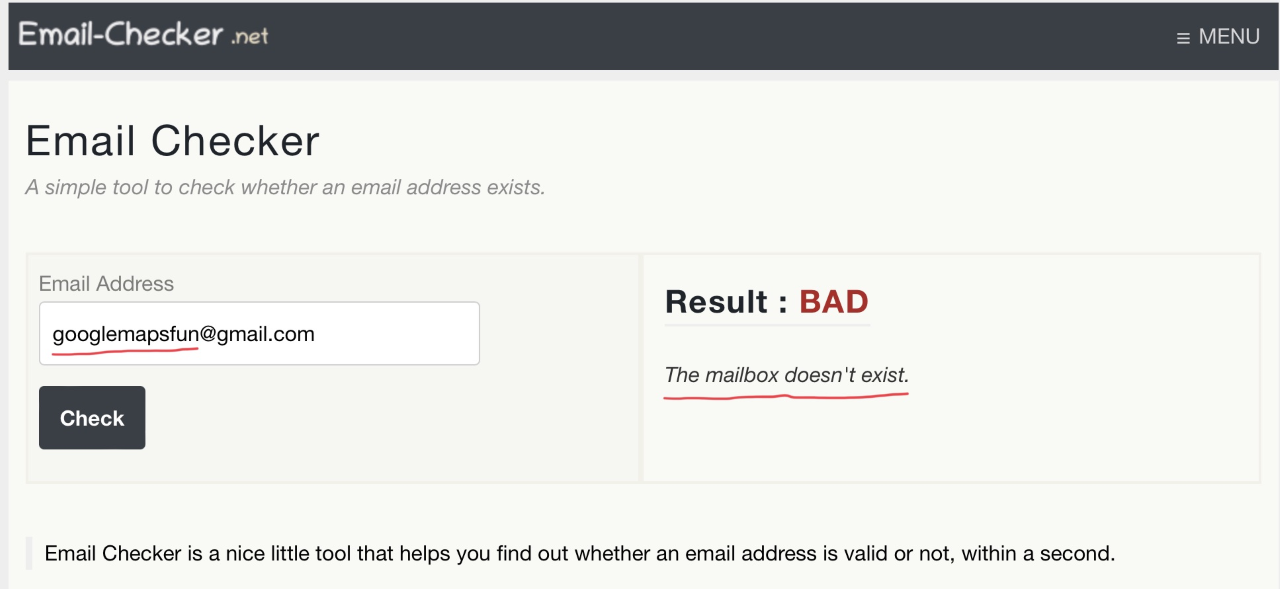
Using the Profile Picture
The profile picture is another great piece of information to find out more about a TikTok user. Unfortunately you can’t explore the profile picture’s meta-data (e.g. where the picture was taken), since TikTok deletes that information when the picture is uploaded. What you can do, is run the profile picture through reverse image search, to see if the same picture is used for other accounts.
To be able to do that you need the URL of the picture. You cannot get it from the app, you have to inspect the profile you are interested in, in your browser. To get the URL, open the Tik Tok profile in your browser, right click on the profile picture and choose “inspect”. This opens the development window of your browser, where a piece of HTML-code, containing the URL of the picture, will be already highlighted.
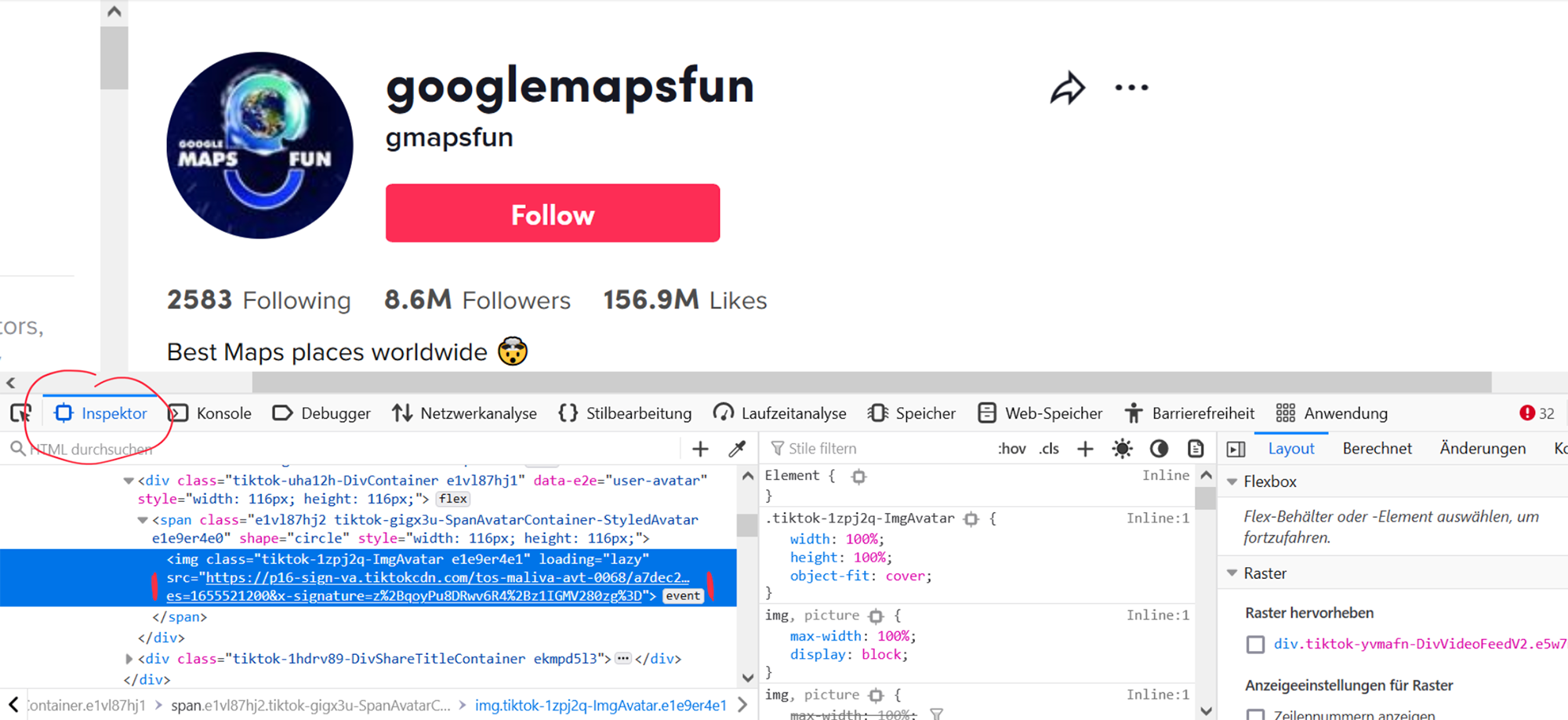
You then simply copy the URL out of the highlighted code and run it through Google’s image search in quotation marks. Be aware that Google images is just one possibility. Yandex is another search engine that uses AI for reverse image search and has the reputation of producing more accurate results. You can also open the picture-URL in a new browser window to open the picture in its original size. This can be helpful if you want to download it in high resolution. This process also works for other websites and social platforms.
Interaction With Other Users
Knowing what other accounts are mentioning a TikTok user of interest can also be useful. You can gain insights into interactions between accounts and learn what other users think about a certain account. With small accounts that don’t have a large following, there is even a possibility that the users that mention each other also know each other in real life, which can open new ways of investigation when you are looking for a user’s identity.
You can use the following combination of Google operators to search for videos that mention the user you are interested in in the description text of the video:
site:tiktok.com intext:”@uniqueusername” -intext”displayname”
This operator tells google to only look for TikToks that have a certain username in the video description without coming from that user itself. It could look like this:

If you want to look for a certain name or different name variances on multiple websites at once you can also use the following operator and expand it with as many OR-options as you like:
site:instagram.com OR site:tiktok.com OR “possilbe_name_1”OR “possible_name_2”
Archive Your TikTok Search
Knowing where to find information on TikTok is one thing. But it is just as important to save that information, since videos or even whole profiles might disappear during your search. Archive.org is a website that basically operates as the archive of the internet and that you can use to store and preserve websites to later use as a trustworthy source for citation. It sometimes struggles to properly save sites from social media platforms but it works fine with TikTok. In order to save a TikTok you have to paste its URL to the save-field of the website.

More Ways to Use TikTok for Investigative Journalism
If you want to know more about investigations on TikTok, especially about systematically monitoring the platform, here are some links and tools to get you started:
Popster: Not free, but not overly expensive either. You can use this tool to analyze trends and viewership on TikTok. This might come in handy if you want to do stories on how the kind of content a TikTok user creates influences their viewership or audience.
Bellingcat offers a new and very helpful tool that allows you to scrape TikTok for a lot of information at once. You can use it for example to extract all videos that use a specific hashtag. Using the tool requires you to do a little bit of coding, but Bellingcat provides a very detailed instruction on how to do that.
Towardsdatasciece offers an overview that shows you how to systematically collect information from TikTok, using an API.


